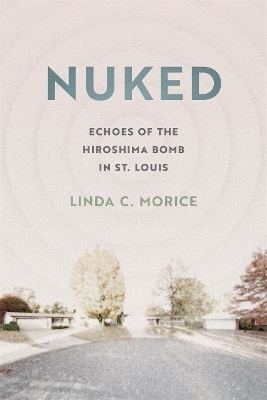
Nuked
Echoes of the Hiroshima Bomb in St. Louis
Seiten
2022
University of Georgia Press (Verlag)
978-0-8203-6316-5 (ISBN)
University of Georgia Press (Verlag)
978-0-8203-6316-5 (ISBN)
Recounts the long-term effects of radiological exposure in St Louis, Missouri - the city that refined uranium for the first atomic bomb. Issues explored include minimal concern for land pollution; cutting corners to win the war; insufficient reporting mechanisms for cancer; and a government that failed to respond to regional problems.
Nuked recounts the long-term effects of radiological exposure in St. Louis, Missouri—the city that refined uranium for the first self- sustaining nuclear reaction and the first atomic bomb. As part of the top-secret Manhattan Project during World War II, the refining created an enormous amount of radioactive waste that increased as more nuclear weapons were produced and stockpiled for the Cold War.
Unfortunately, government officials deposited the waste on open land next to the municipal airport. An adjacent creek transported radionuclides downstream to the Missouri River, thereby contaminating St. Louis’s northern suburbs. Amid official assurances of safety, residents were unaware of the risks. The resulting public health crisis continues today with cleanup operations expected to last through the year 2238.
Morice attributes the crisis to several factors. They include a minimal concern for land pollution; cutting corners to win the war; new homebuilding practices that spread radioactive dirt; insufficient reporting mechanisms for cancer; and a fragmented government that failed to respond to regional problems.
Nuked recounts the long-term effects of radiological exposure in St. Louis, Missouri—the city that refined uranium for the first self- sustaining nuclear reaction and the first atomic bomb. As part of the top-secret Manhattan Project during World War II, the refining created an enormous amount of radioactive waste that increased as more nuclear weapons were produced and stockpiled for the Cold War.
Unfortunately, government officials deposited the waste on open land next to the municipal airport. An adjacent creek transported radionuclides downstream to the Missouri River, thereby contaminating St. Louis’s northern suburbs. Amid official assurances of safety, residents were unaware of the risks. The resulting public health crisis continues today with cleanup operations expected to last through the year 2238.
Morice attributes the crisis to several factors. They include a minimal concern for land pollution; cutting corners to win the war; new homebuilding practices that spread radioactive dirt; insufficient reporting mechanisms for cancer; and a fragmented government that failed to respond to regional problems.
Linda C. Morice is professor emerita of educational leadership at Southern Illinois University, Edwardsville. Her publications include many articles in academic journals and three books: Flora White: In the Vanguard of Gender Equity; Coordinate Colleges for American Women: A Convergence of Interests, 1947–78; and a coedited volume, Life Stories: Exploring Issues in Educational History through Biography.
| Erscheinungsdatum | 01.11.2022 |
|---|---|
| Zusatzinfo | 1 b&w image|(2) |
| Verlagsort | Georgia |
| Sprache | englisch |
| Maße | 152 x 228 mm |
| Gewicht | 363 g |
| Themenwelt | Natur / Technik ► Fahrzeuge / Flugzeuge / Schiffe ► Militärfahrzeuge / -flugzeuge / -schiffe |
| Naturwissenschaften ► Chemie | |
| Sozialwissenschaften ► Politik / Verwaltung | |
| Sozialwissenschaften ► Soziologie ► Empirische Sozialforschung | |
| Technik ► Umwelttechnik / Biotechnologie | |
| ISBN-10 | 0-8203-6316-2 / 0820363162 |
| ISBN-13 | 978-0-8203-6316-5 / 9780820363165 |
| Zustand | Neuware |
| Haben Sie eine Frage zum Produkt? |
Mehr entdecken
aus dem Bereich
aus dem Bereich
von der Machtergreifung bis zur Gründung der Vereinten Nationen
Buch | Softcover (2023)
Motorbuch Verlag
CHF 38,90


